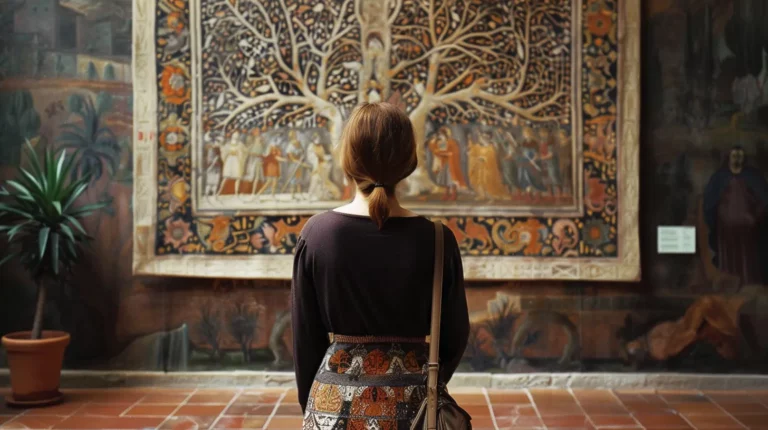Throughout history, time and again, we see spiritual figures represented with a ray of light. Sometimes it’s a single beam, streaming through a break in the clouds. Sometimes it’s a collection a rays, emanating from the figure to illuminate their surroundings.
But what do these rays mean? If we turn back to the ancient Vedic texts of India, we can find one of the very first references to sacred rays of light.
We’ll explore what a ray of light is, both in the context of the ancient Vedas and in our modern era and how these rays of light can help us today.
What Is the Meaning of Ray of Light?
So, what is a ray?
In its absolute essence, light allows us to see what’s around us. When there’s no light, we can’t see. We’re in darkness. When we have a source of light, we’re able to know our surroundings. This is how we understand light in a concrete way.
But what about the spiritual ray of light? The ray of light associated with the great mystics and sages? This type of light serves to illuminate and teach. It guides and navigates.
Deborah King, Author of Minvalley’s Be A Modern Master Program, explains it in this way:
A ray is a type of energy that produces changes that intensify consciousness. When a ray becomes prominent, it starts to tear down old ideas and helps form and create new ones.
We can use these spiritual rays to transmute and evolve our consciousness.

What are god rays?
God rays, or angel rays, are the tangible beams of light we sometimes see through a break in the clouds.
It’s said that these angel rays actually represent the light of the seven, or seven rays.
Each ray of light represents a different ascended master. By focusing on a different ray of light, you can develop different physical, mental, and spiritual skills.
Deborah King explains the seven rays in this way:
Each of the seven rays has an ascended master directing the ray. These individuals served everyone—in our recent history, Jesus is a great example. Every new level of initiation connects you to a ray—in fact, you’re learning and experiencing a ray right now! Eventually you’ll master the ray you’re learning and will move onto the next.
Each ray of light has a story to tell and a lesson to be learned. But where did these rays of light first appear in our collective history?
What Was the Vedic Ray of Light?
So, where did the fascination with rays of light begin? Well, for the answer to that question, we need to flip back several thousand years to the ancient Vedic text, the Upanishads.
The Upanishads are a collection of chants, mantras, and stories from the ancient Vedic gurus of India. They contain powerful life lessons that continue to resonate with modern audiences today.
In the Upanishads, we find the first mention of the sacred ray of light.
Agni is a Vedic deity often depicted as a being with seven hands, two heads, and three legs. His two heads are said to represent the dualistic qualities of destruction and benevolence. Agni is surrounded by seven rays of light that emanate from his body.
Are the seven rays Deborah King mentions connected to the seven rays we see surrounding Agni? It can’t just be a coincidence, can it?

What do these ancient god rays mean today?
It’s not only Agni that we see representing the seven rays of light. Many deities have been depicted this way, including the Greek god, Zeus, the Egyptian deity, Chnuphis, the dove of the Holy Ghost, and Mary, mother of Jesus.
So, what does it all mean?
It’s no coincidence that we see these ancient seven rays of light depicted in different spiritual systems across the ages.
The light illuminates the path. These great teachers and beloved sages helped guide our way. They are depicted with these rays of light, both physical and spiritual because they are our guides. They want to show us the path.
Experiencing the seven rays today
Each and every person is experiencing a ray right now. These seven rays are designed to help us ascend to higher spiritual planes, just like the ascended masters.
It should come as no surprise that we see these same seven rays associated with powerful spiritual figures, like Agni, Zeus, and the Holy Ghost. The seven rays depicted with these figures are the same seven rays we can use today to help guide our spiritual progress.







